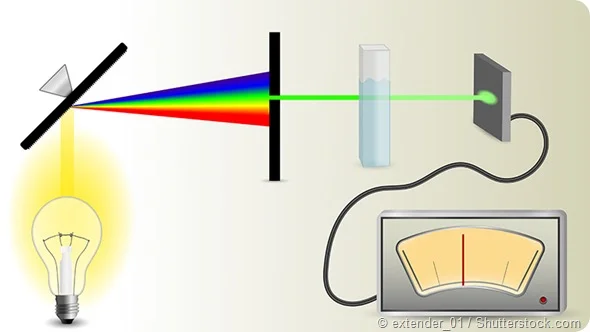Spectrophotometry, a branch of analytical chemistry, has significantly advanced our ability to understand and quantify the composition of substances.
At the heart of this discipline lies the spectrophotometer uv vis, an ingenious instrument that measures the intensity of light absorbed or transmitted by a substance across a range of wavelengths.
In this article, we delve into the history of spectrophotometers and explore their pivotal roles in various industries.
The Historical Journey:
The inception of spectrophotometry can be traced back to the late 19th century. In 1873, Gustav Kirchhoff and Robert Bunsen laid the foundation by discovering the connection between absorption spectra and the chemical composition of elements. The next crucial milestone came in 1934 when American chemist Arnold Beckman introduced the first commercial spectrophotometer, revolutionizing the field of analytical chemistry.
The advent of UV-Visible (UV-Vis) spectrophotometry marked a significant leap forward. In the 1940s and 1950s, advancements in optics and electronics led to the development of UV-Vis spectrophotometers capable of analyzing substances in both the ultraviolet and visible regions of the electromagnetic spectrum.
Industrial Applications:
- Pharmaceuticals:
Spectrophotometers play a pivotal role in the pharmaceutical industry, aiding in drug development, quality control, and ensuring compliance with regulatory standards. The instruments are employed for quantitative analysis, verifying the concentration of active ingredients in formulations. - Biotechnology and Life Sciences:
In biotechnology, spectrophotometers are indispensable for studying nucleic acids and proteins. Researchers use UV-Vis spectrophotometry to determine the concentration and purity of DNA, RNA, and proteins, essential for applications like PCR and gel electrophoresis. - Environmental Monitoring:
Spectrophotometers find applications in environmental science for analyzing water quality, measuring pollutants, and studying the impact of contaminants. The instruments contribute to the monitoring and assessment of ecosystems, ensuring sustainable environmental practices. - Food and Beverage Industry:
Quality control in the food and beverage industry heavily relies on spectrophotometry. From determining the color of beverages to analyzing the concentration of additives, spectrophotometers provide precise measurements critical for product consistency. - Chemical Manufacturing:
Chemical industries leverage spectrophotometers for various purposes, including monitoring reactions, analyzing chemical compositions, and ensuring the quality of raw materials and finished products. UV-Vis spectrophotometry is particularly useful in characterizing organic compounds. - Clinical Diagnostics:
In clinical laboratories, spectrophotometers are used for a range of applications, including blood analysis, enzyme assays, and immunoassays. These instruments aid in diagnosing medical conditions and monitoring patient health.
Recent Advancements:
Modern spectrophotometers have seen remarkable advancements. The integration of diode array detectors allows simultaneous measurement across multiple wavelengths, enhancing efficiency and data accuracy. Additionally, automation and software innovations have streamlined workflows, making spectrophotometry more accessible and user-friendly.
Conclusion:
Spectrophotometers have evolved from groundbreaking scientific discoveries to becoming indispensable tools across diverse industries. Their ability to provide precise and quantitative data has significantly advanced research, quality control, and diagnostics.
As technology continues to propel these instruments forward, the impact of spectrophotometry on scientific progress and industrial processes is set to expand, opening new frontiers in our understanding of the molecular world. Learn more>

